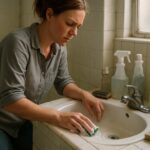Many people find themselves facing a common and frustrating issue: bed bugs. These tiny pests can turn your home into an uncomfortable place, making good sleep hard to come by. One surprising fact about bed bugs is that they can survive for many months without a blood meal, hiding away in places you wouldn’t expect.
This article will guide you through everything you need to know about bed bugs, from identifying their presence to effectively dealing with an infestation. You’ll learn how these pests affect your health, how to recognize the early signs of an infestation, and the difference between professional extermination and DIY methods for getting rid of them.
Let’s get started on making your home bed bug-free again and a house clean. Keep reading!
Key Takeaways
- Bed bugs can survive without blood for months and are not a sign of dirtiness. They hide in mattresses, furniture, and even behind wallpapers.
- Identifying bedbugs early includes looking for itchy bites, blood spots on sheets, and musty odors. Checking regularly can prevent serious infestations.
- Treating bedbug bites involves cleaning the area with soap and water. Severe reactions may require medical attention.
- Getting rid of bedbugs requires thorough cleaning, vacuuming, using protective covers for mattresses, and sometimes professional extermination methods.
- Preventing bedbugs involves inspecting second-hand furniture before bringing it home, washing clothes at high temperatures after traveling, reducing clutter to limit hiding spots, and using door sweeps to block their entry from outside.
Understanding Bedbugs
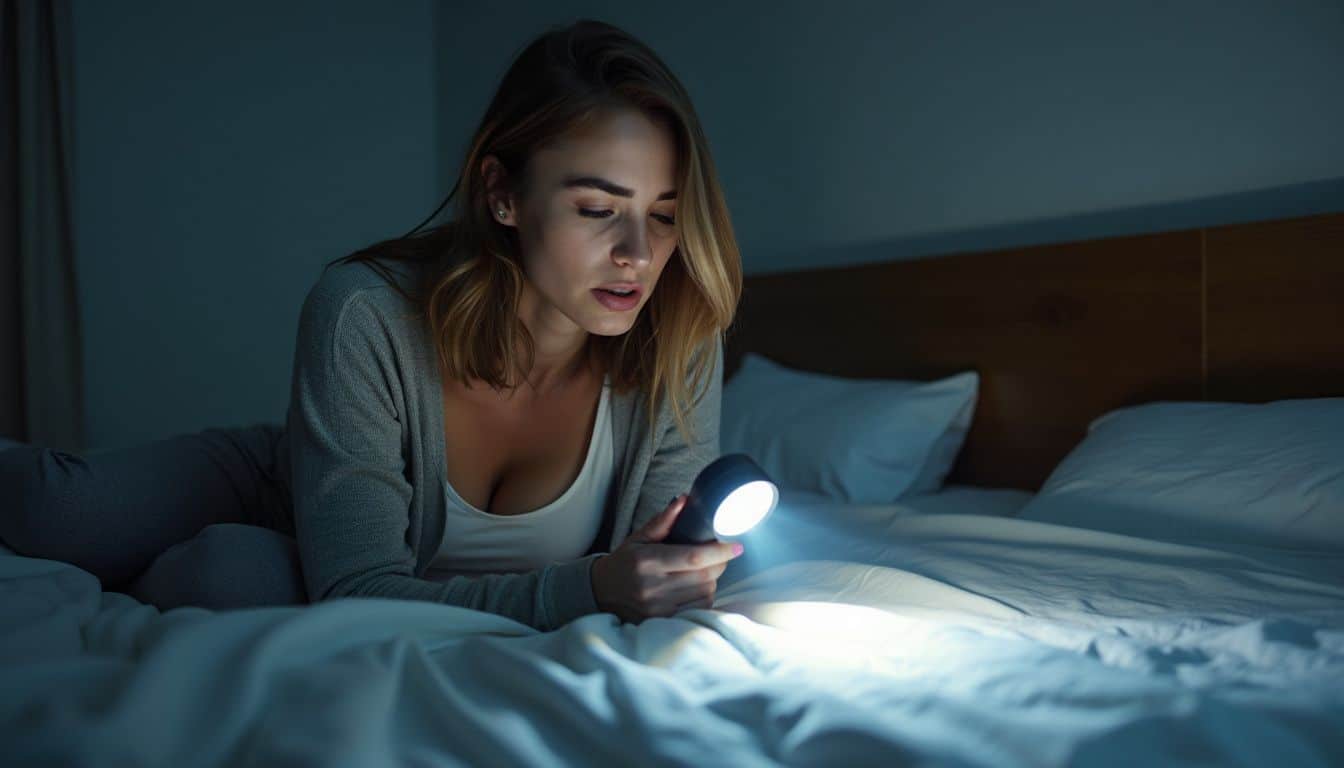
Bedbugs, often found in sleeping areas, thrive by feeding on human blood. These tiny pests are experts at hiding and can cause a range of problems for anyone dealing with an infestation.
What Are Bedbugs?
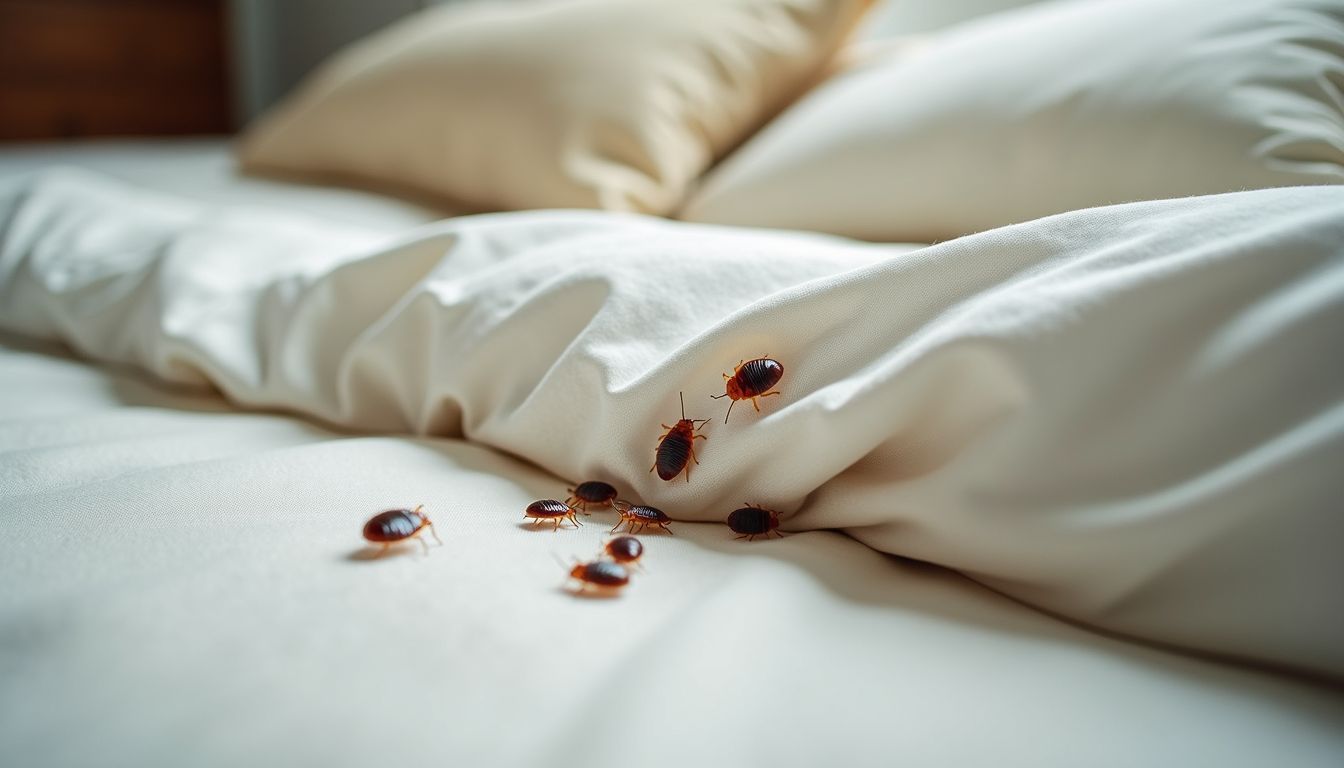
Bedbugs are small, blood-feeding insects that have become a significant concern in homes and hotels worldwide. These pests thrive by consuming the blood of humans and animals while they sleep.
Small and brownish, they can hide in many places like mattresses, box springs, and within cracks in furniture. Since they feed at night, people often don’t notice them until there’s a serious infestation.
These insects are experts at hiding, making them hard to detect without a close inspection. They tend to live near where people sleep because they are attracted to the carbon dioxide humans exhale and the warmth bodies provide.
Recognizing an infestation early is critical because bedbugs multiply quickly; one female can lay hundreds of eggs over her lifetime. Pest control becomes necessary as soon as these bloodsuckers make themselves known through itchy bites or visible sightings on bedding or furniture.
What Do Bedbugs Look Like?
Moving from identifying what bedbugs are to recognizing them visually is a crucial step. Bed bugs, known scientifically as Cimex lectularius, have distinct appearances that set them apart from other insects.
Adults reach about the size of an apple seed, measuring 5-7 mm in length. They possess flat, oval bodies when unfed but become red and swollen after feeding on blood. Their color ranges from brown to reddish-brown, making them visible against light-colored backgrounds.
Young bedbugs, or nymphs, appear almost transparent and grow darker as they mature through five molting stages before reaching adulthood. Eggs pose a challenge to detect due to their tiny size and pale yellow color.
These pests do not have wings, so they cannot fly or jump but move quickly across floors and walls. Recognizing these features plays a vital role in early detection of a bedbug infestation.
Health Implications of Bedbugs

Bedbugs can cause more than just itchy bites; they may lead to serious skin problems and allergic reactions. The Centers for Disease Control and Prevention (CDC) reports that these pests might also increase stress levels and affect sleep quality.
How Can Bedbugs Be Harmful to My Health?
Bedbugs bring more than just a nuisance into your home; they pose real health risks. These tiny pests feed on blood during the night, leading to skin problems such as itchy welts, allergic reactions, and even secondary infections if bites are scratched too much.
The Centers for Disease Control and Prevention (CDC) confirms that while bedbugs aren’t known to spread diseases directly, the discomfort and sleeplessness they cause can significantly impact one’s well-being.
People react differently to bedbug bites. Some might not notice them at all, but others could experience severe allergic responses requiring medical attention. In rare cases, excessive blood loss from multiple bites could lead to anemia in some individuals.
Therefore, recognizing and treating bedbug infestations early is crucial to prevent these health issues and ensure a safe environment for your family.
Recognizing Bedbugs

Identifying bedbugs early can help you tackle an infestation before it spreads. Keep reading to learn how to spot these pests in your home.
Early Signs of Bedbugs
Parents often worry about the cleanliness and safety of their homes for good reasons. Bed bugs pose a threat that is not always easy to spot initially. Here’s a list of early signs that can help you detect bed bug infestations:
- Small, red bites on skin: People usually find bites on their arms and legs after sleeping. These bites might itch more than mosquito bites.
- Blood spots on sheets: Tiny blood stains can appear on your bedding from the bugs being crushed while you move in your sleep.
- Dark or rusty spots on mattress: Bed bugs leave behind excrement that creates these marks on mattresses, sheets, and even walls near the bed.
- Musty odor: A heavy, sweet smell might come from a large bed bug infestation. This odor comes from the bugs’ scent glands.
- Egg shells or shed skins: Finding small pale yellow skins or egg casings around your bedroom points to a growing problem.
- Live bed bugs: Although they’re hard to catch, seeing live bed bugs is a clear sign. These insects are small, brownish, and flat.
- Unusual spots on furniture: Besides the bed, check other areas like chairs and sofas for signs of bed bugs.
Detecting these early signs is crucial for handling the situation before it worsens. Next up, we’ll delve into how to properly check for bedbugs in your home.
How to Check for Bedbugs
After identifying early signs of bedbugs, it’s crucial to know how to check for these pests. This process helps prevent an infestation from spreading throughout your home.
- Look closely at your bed sheets and pillowcases for tiny, dark stains. Bedbugs leave behind small blood smears after feeding.
- Examine the seams of mattresses and box springs. Use a flashlight to highlight any hidden bugs or eggs.
- Check all corners and edges of the bed frame. Bedbugs like to hide in cracks and crevices during the day.
- Inspect upholstered furniture, especially sofas and chairs where people rest for longer periods. Focus on seams, folds, and skirts.
- Move furniture away from walls to look for signs of bedbugs in baseboards and carpet edges.
- Review any curtains or drapes near sleeping areas for bedbugs or their droppings.
- Use a credit card or a similar flat tool to swipe along cracks in wooden furniture and decipher if there are any hidden bugs.
- Look inside electrical outlets and light switches as bedbugs might hide there too.
- Examine personal items such as books, alarm clocks, and even electronics close to beds or resting areas.
- Place interceptor cups under each leg of your beds and furniture to catch wandering bedbugs attempting to climb up.
These steps should help you identify potential bedbug issues before they turn into severe infestations by focusing on typical hiding spots around your home.
Pictures of Bedbugs and their Bites
Seeing pictures of bedbugs and their bites helps parents spot these pests early. Bedbugs are tiny, reddish-brown insects that hide in mattresses, furniture, and even behind wallpapers.
Their bites look like small, red marks on the skin and may lead to itching or a rash. These pests feed on human blood at night. Since they are small, finding them can be hard without knowing what to look for.
Photos show that bedbug bites often appear in lines or clusters on areas of skin exposed while sleeping. Recognizing these signs early can prevent larger infestations in homes. Parents should check their children’s beds and other common hiding spots regularly.
Washing clothes and bedding at high temperatures kills bedbugs as well as using vacuum cleaners on mattresses and furniture.
Dealing with Bedbugs
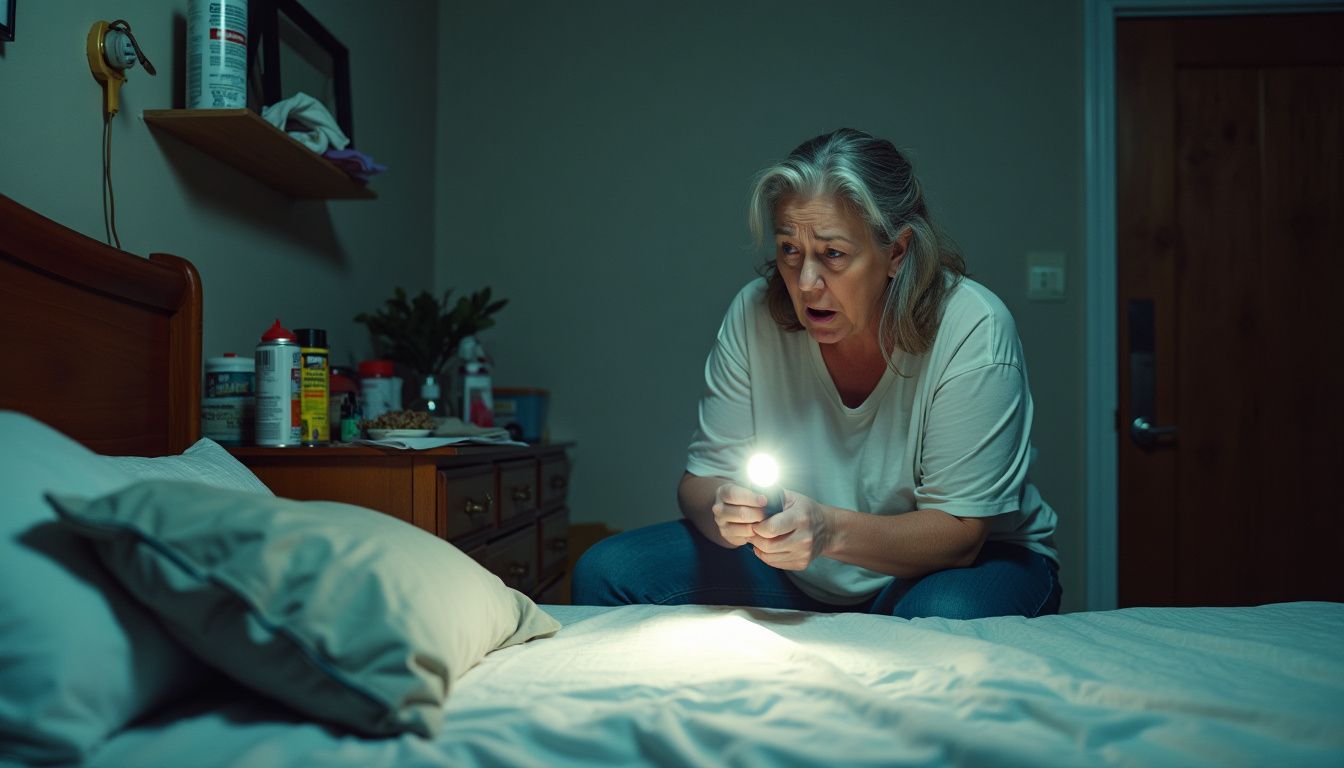
Tackling bedbug infestations requires a clear plan and the right tools. People often turn to insect killers and professional pest eliminators to clear their homes of these pests.
Bedbug Bites: Symptoms and Treatment
Bedbug bites often appear as small, red, itchy bumps on the skin. Parents might notice these signs on their child’s arms, legs, or back after sleeping. These irritations come from bed bugs feeding on human blood during the night.
Unlike mosquito bites that swell and become evident quickly, bed bug bites may take a few days to show up. Some kids might react more severely to the bites, developing intense itching and even hives or blisters.
Treating bed bug bites involves cleaning the affected area with soap and water to prevent infection. Applying over-the-counter anti-itch creams or taking oral antihistamines can also help relieve itching and discomfort.
For those who experience severe reactions like allergic symptoms or anaphylaxis—a rare but serious response—it’s crucial to seek medical attention promptly. To avoid further issues, parents should consider professional extermination methods to remove bed bugs from their home using safe pesticides approved by the Environmental Protection Agency (EPA), rather than relying solely on do-it-yourself solutions that may not effectively tackle the infestation.
How to Get Rid of Bedbugs
Eliminating bedbugs calls for a sharp eye and sustained actions. A vital role within this battle falls to parents who adopt an all-encompassing strategy.
- Explore all bedrooms completely for signs of bedbugs, such as tiny brown points or live insects. Use a flashlight to examine each corner.
- Launder all bedding, curtains, and clothes in hot water and dry them on the peak dryer setting to eliminate bedbugs.
- Vacuum your home thoroughly, concentrating on carpets, furniture, and concealed spots where bugs may lurk.
- Secure gaps in walls and around baseboards to prevent bedbugs from entering your home.
- Cover mattresses and pillows with protective covers to prevent bedbugs.
- Distribute diatomaceous earth around the perimeters of rooms and beneath furniture; it’s a non-chemical strategy that desiccates the bugs.
- Ponder using pyrethroids-based pesticides with care, adhering to label directions strictly to circumvent health hazards.
- Apply steam cleaning to carpets and upholstery at temperatures sufficient to instantly eliminate bedbugs.
- Dispose of heavily invaded items that cannot be salvaged by encasing them in plastic and marking as “infested with bedbugs”.
- Engage a professional exterminator if the infestation persists. Pest control firms employ techniques like heat therapy or chemical applications that are more potent but necessitate proficiency.
- Persist in checking for bedbugs consistently even subsequent to treatment to verify they don’t recur.
Parents following these procedures will significantly diminish the likelihood of bedbug invasions taking root or recurring once eradicated.
Professional Extermination vs. DIY Methods
After exploring how to identify and understand bedbugs, a significant concern for parents now is choosing between professional extermination and do-it-yourself (DIY) methods to solve the infestation problem. This choice is crucial for ensuring a safe and bedbug-free home. The following table outlines key points of both options, helping parents make an informed decision.
| Aspect | Professional Extermination | DIY Methods |
|---|---|---|
| Efficiency | Highly effective. Professionals use industrial-grade insecticides and heat treatments that are more potent than over-the-counter products. | Varies. Depends on the severity of the infestation and the approach used. Natural remedies are less effective on large infestations. |
| Cost | More expensive upfront but may save money in the long run by eliminating the infestation thoroughly on the first try. | Less costly initially. However, repeated treatments and potential failure could lead to higher expenses over time. |
| Time Commitment | Less time-consuming for the homeowner. Professionals handle the entire process. | Requires significant time and effort from the homeowner to research and apply treatments. |
| Safety | Exterminators are trained to handle chemicals safely and often offer eco-friendly options. | Risk of misuse of chemicals. However, natural and eco-friendly DIY solutions reduce this risk. |
| Guarantee | Many professionals offer a warranty or guarantee on their services. | No guarantees. Success depends on the adequacy and thoroughness of the treatment applied by the homeowner. |
| Convenience | High. Requires minimal effort from the homeowner. | Low. Requires extensive effort in terms of preparation, application, and post-treatment cleaning. |
| Expertise | High. Professionals possess the knowledge and experience to identify and treat all stages of bedbug infestation effectively. | Varies. Homeowners may need to conduct extensive research to effectively tackle the problem. |
Deciding between professional extermination and DIY methods depends on several factors including the infestation’s severity, budget, and personal preferences. Parents should weigh these considerations carefully to choose the best approach for their family’s safety and well-being.
Prevention Strategies
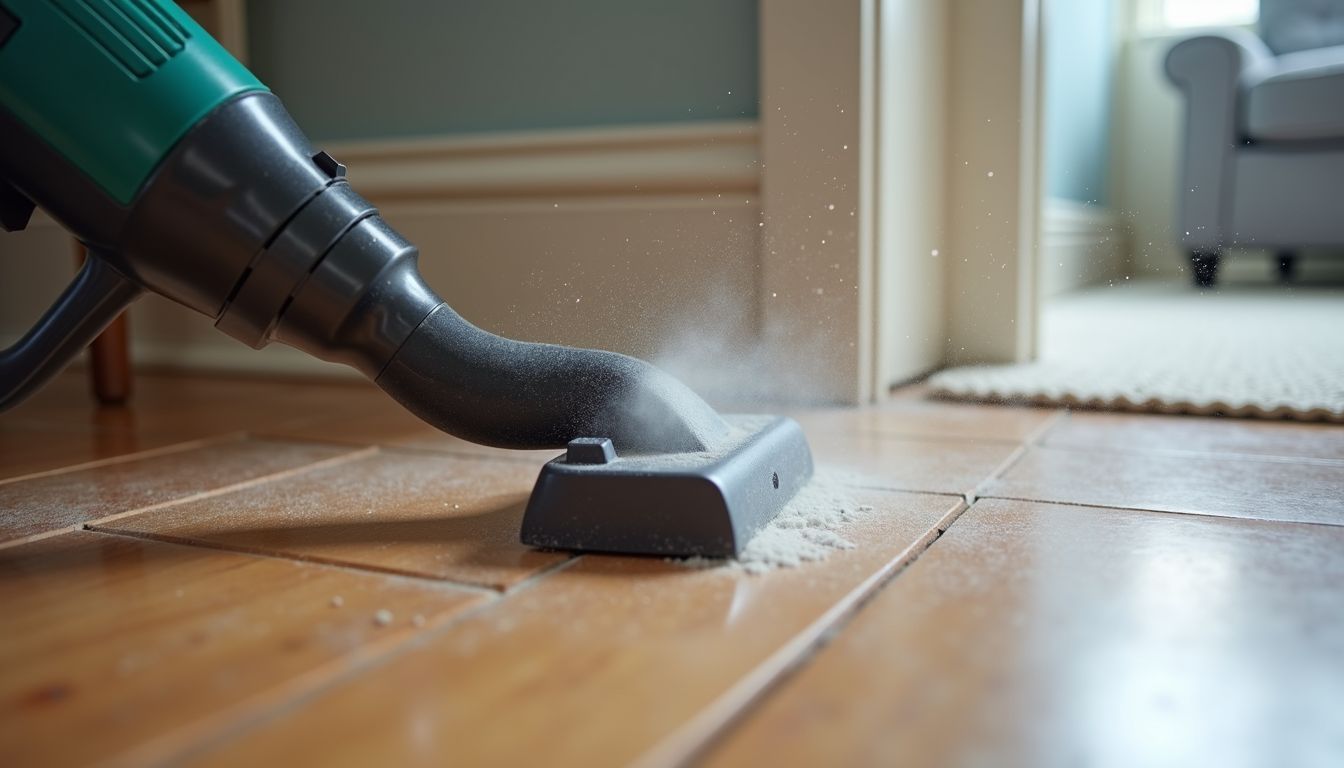
To keep bed bugs away, people often change their sheets regularly and vacuum floors often. They also seal cracks in walls and around baseboards to block entry points for these pests.
How to Prevent Bedbugs
Preventing bedbugs requires attention to detail and a proactive approach. Parents can protect their families by following these simple steps:
- Inspect second-hand furniture for signs of bedbugs before bringing it home. Look at seams and folds where bedbugs like to hide.
- Encase mattresses and box springs in protective covers designed to keep out bedbugs. These covers are often made of tightly woven fabric that prevents bugs from entering or escaping.
- Wash and dry clothes on high heat after returning from trips. Bedbugs are known to hitchhike in luggage, so this step is crucial.
- Use vacuum cleaners regularly on beds, furniture, and carpets to remove any bedbugs or eggs that might be present.
- Reduce clutter in your home to minimize bedbug hiding spots. This includes tidying up areas under beds and closets.
- Repair cracks in walls and peeling wallpaper to eliminate bedbug shelters. Sealing these openings also prevents other pests from entering the home.
- Install door sweeps on the bottom of doors to keep bedbugs from moving between apartments in multi-unit buildings.
- Educate your family about not placing bags or clothing on floors in public places like hotels or theaters, which may have bedbug infestations.
- Examine your pets’ bedding regularly, as bedbugs can also live on dogs and cats, albeit less commonly than on human hosts.
- Prevent birds and bats from roosting near your home as they can carry bed bugs into the house indirectly through nesting materials or droppings.
- Consider using non-chemical methods like steam cleaning for furniture suspected of being infested with bedbugs as it kills all stages of life without using insecticides.
By employing these strategies, parents ensure their homes remain free from the discomforts and health implications associated with common bed bugs.
Debunking Bedbug Myths
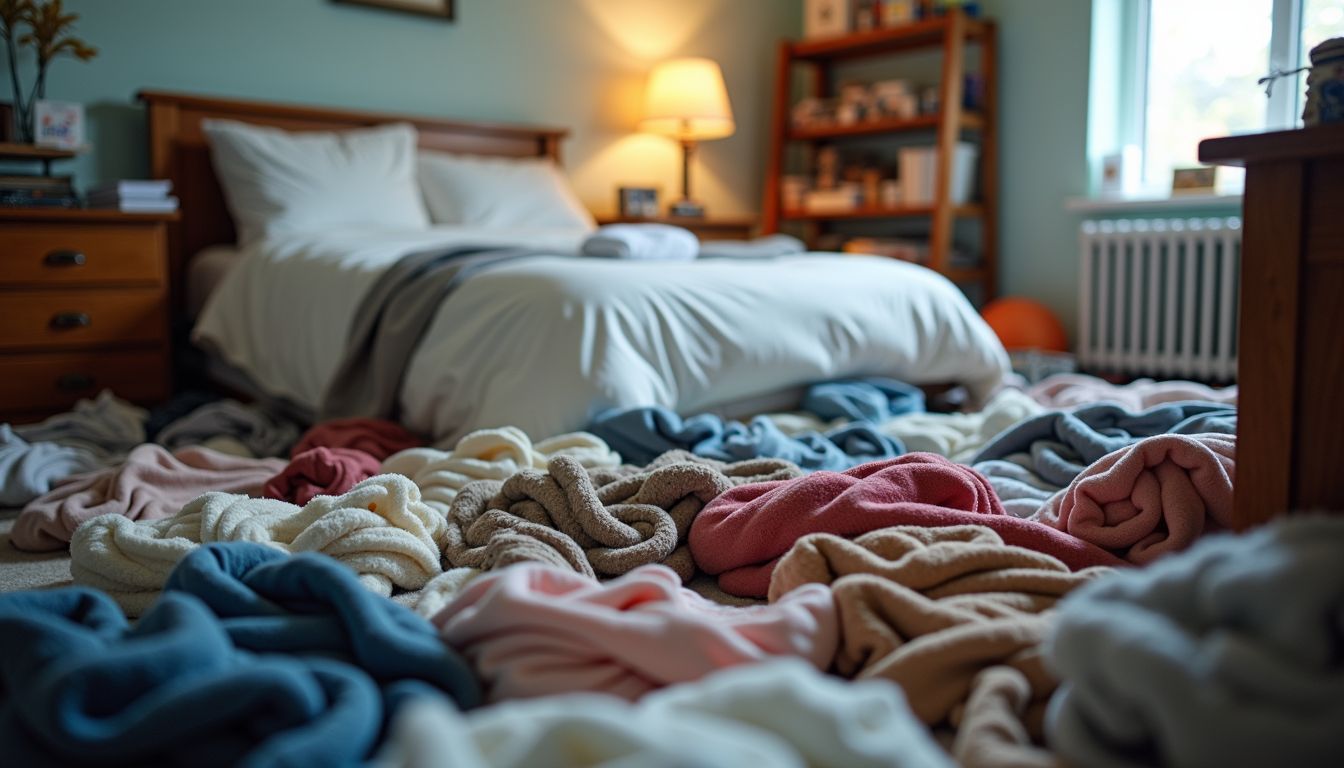
Many people think bedbugs only live in dirty places. This is not true. Bedbugs can thrive in any environment as long as they have access to blood-meals. They are not picky about cleanliness and can be found anywhere from clean hospitals to cozy homes.
It’s all about the availability of their food source, not the tidiness of their surroundings.
Another common myth is that bedbugs transmit diseases to humans. Research shows that while they feed on blood and can cause skin irritation, there’s no solid evidence that bedbugs spread infectious diseases like mosquitoes or ticks might do.
Parents should focus more on preventing bites through proper pest management rather than worrying about disease transmission from these pests.
When to Seek Medical Attention
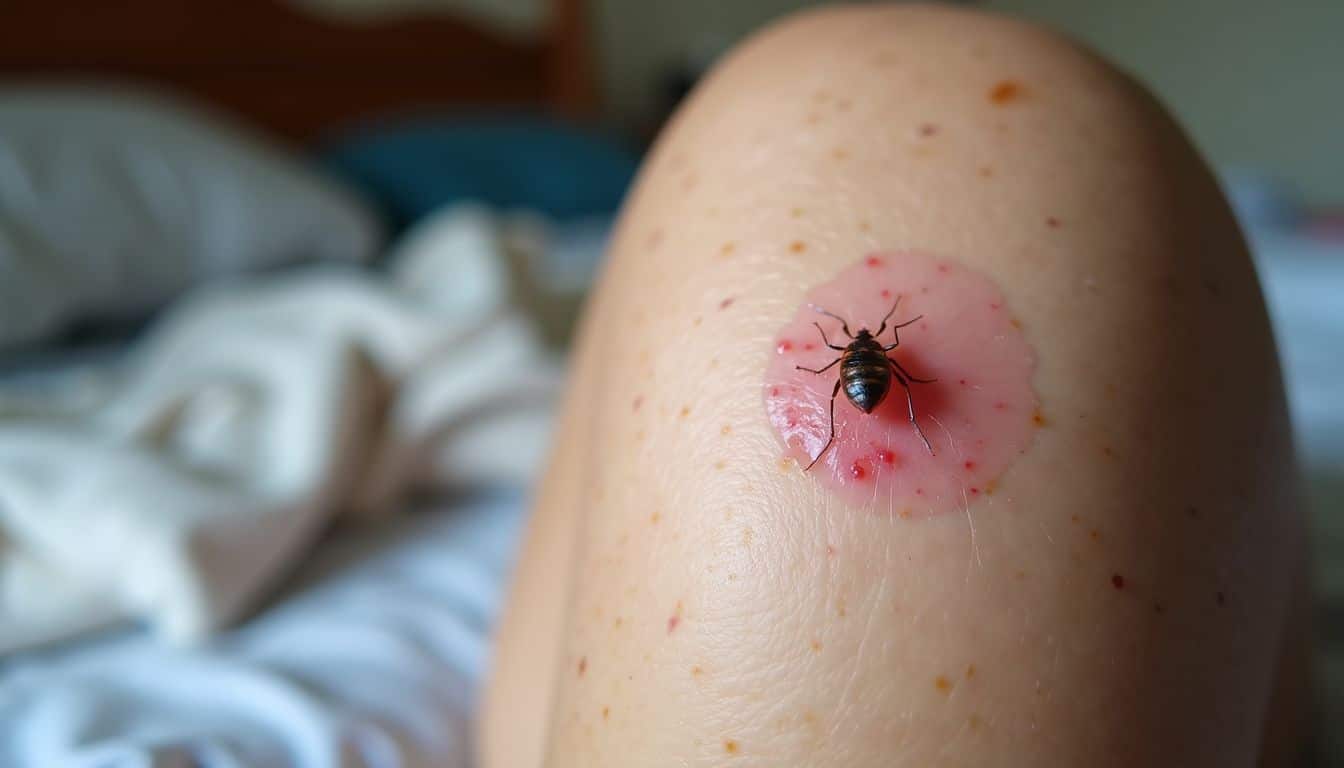
After clearing up some common myths about bed bugs, it’s crucial to know when these pests cause more than just annoyance. If someone in your family starts showing severe allergic reactions to bed bug bites, such as intense swelling or difficulty breathing, medical help is necessary.
Allergies can turn serious quickly.
Bed bug bites usually look like small red marks and might itch. But if the bite areas become infected—showing signs of pus, increasing pain, or spreading redness—it’s time to see a doctor.
Infections from scratching can lead to more significant health problems. Also, if fever follows a series of bed bug bites, this could point to a bacterial infection from the bite sites needing professional treatment.
Parents should act fast in these situations to ensure their family’s health isn’t at risk.
Conclusion
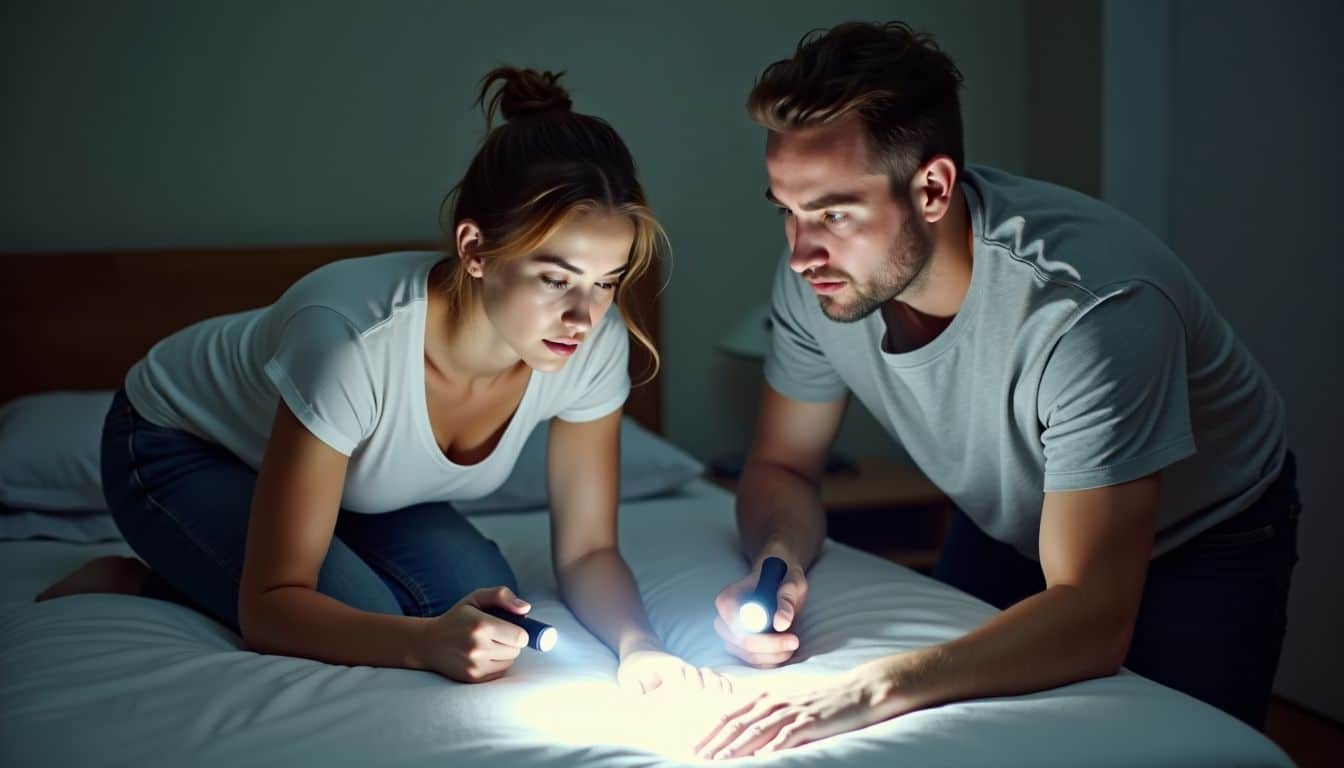
Bed bugs are tricky pests that need attention and action. Recognizing these tiny invaders early helps keep your home safe. If you spot signs, take steps to treat bites and remove the bugs right away.
Options range from DIY methods to calling professionals for help. Keeping your living spaces clean and following prevention tips can also ward off future invasions. Stay informed, stay vigilant, and you can win the fight against bed bugs. Keeping your house clean can prevent bedbugs and can make you save money in a long term.
Book cleaning services online, get a quote with My Cleaning Angel, see the price and book your house cleaning now.
FAQs
1. What are bed bugs and why should I be concerned about them?
Bed bugs, scientifically known as Cimex Hemipterus, belong to the Cimicidae family of true bugs. They are micropredators that feed on blood meals from humans and some domestic animals like cats. Bed bug bites can lead to conditions such as cimicosis, allergies due to salivary proteins, or even secondary infections if not treated properly.
2. How do bed bugs spread and what environments do they thrive in?
Bed bugs can infest various environments including rental housing units or places with heavy linen usage like hotels. They spread through clothes, luggage, furniture and even through roosts of pests like ants and cockroaches. These pests prefer warm temperatures regulated by thermostats which is why they often reside near beds.
3. Are there any distinctive features or behaviors of bed bugs that I should know about?
Yes, bedbugs have unique mouthparts for biting and feeding on their hosts’ blood during mating periods after ecdysis – a process where they shed their skins during moult stages of growth . Notably, these pests emit odors similar to cilantro when crushed due to pheromones released for communication among themselves.
4. Can bed bug infestations lead to other medical conditions?
While not directly infecting humans with diseases like Lyme disease or malaria unlike fleas or lice; the itching caused by bedbug bites may become secondarily infected leading to more serious health issues requiring medical attention.
5. What measures can I take at home against a potential bed bug infestation?
Maintaining cleanliness is key- regular laundering using washers at high heat settings helps kill these pests along with dry-cleaning ‘dry-clean only’ items especially cotton-based ones since these insects hide in fabric folds too.
Also consider pest-control services using organochlorine insecticides despite some resistance to pesticides shown by these bugs.
6. What are some professional extermination methods for bed bugs?
Exterminations often use bug sprays containing Pyrethrum or Propoxur, substances harmful to these pests. Companies like Orkin specialize in such services. Additionally, a systematic review of your living space can help identify infestation hotspots and guide the extermination process effectively.





